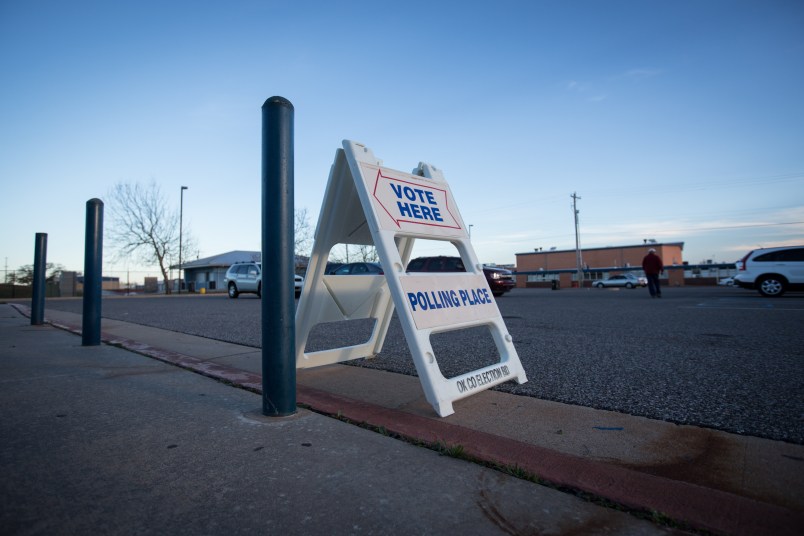Among the changes in the voting rights landscape after a 2013 Supreme Court decision gutting the Voting Rights Act was an uptick in voter purges in states and localities that, before the ruling, had to get federal approval for changes to their elections policies, a new report from the Brennan Center said.
The decision, Shelby County v. Holder, ushered in a slew of voting restrictions passed by the states that previously had to go through a so-called “preclearance” process, where a federal judge or the Justice Department had to OK their election policies, due to their history of racially discriminatory voting laws.
According to the Brennan Center report released Friday, those localities exhibited a median voter removal rate that was 2 percentage points higher in the election cycle after the Shelby the decision, than the election cycle that preceded it.
In the states and localities that were not affected by the Shelby decision, the removal rate “did not budge,” the report said.
“Though 2 percentage points may seem like a small number, more than 2 million fewer voters would have been removed if these counties had removal rates comparable to the rest of the country,” the report said. “Previously covered jurisdictions ended up removing more than 9 million voters between the presidential elections of 2012 and 2016.”
The report cautioned that it cannot determine how many of those voters were removed the rolls erroneously. But it noted a “a statistically significant relationship” between the purge rates and the rates of provisional ballots, which are given to voters who show up to polling places believing they’re eligible to vote but are unable to, due to their name not being on the rolls or for other reasons. The study of the relationship between purge rates and provisional ballots took into account the effect that strict voter ID laws could have had in increasing provisional ballot rates. Texas and other jurisdictions that did not report their removal rates in the period covered were excluded from the top-line analysis.
Advocates of stricter voter laws have themselves said they’re shifting focus towards more aggressive purge policies. They claim that aggressive purges are necessary to keep non-citizens off the rolls, even as they have struggled to show that non-citizen registration is a significant problem in the United States.
The Brennan Center report noted the lawsuits brought by a handful of conservative activist seeking to pressure states and localities to more aggressively remove voters from their rolls. It also examined states’ use of database match programs like ERIC and CrossCheck to remove, and the weaknesses in those databases’ — and particularly CrossCheck’s — methodology.
Read the full report below:







And the partisan Supreme Court justices that enabled this will be absolutely gobsmacked that such behavior could be happening in our country where racism is over and everyone values the principle of “one person, one vote.”
A really good way to challenge a conservative SCOTUS is for attorneys who argue before the court to provide analyses in their briefs that the court was wrong and stupid. It is demonstrably the case that Citizens United, the voting rights act case and Roberts’ ruling on making medicaid optional were wrongly decided. They were wrong from both a legal analysis and a policy impact standpoint. Even on Roberts’ own terms the results were the opposite of what he argued. I find many of the judges do not understand economics, and do not understand race/public policy. They hide behind these elegant, ivory tower abstract arguments. Those are a substitute for doing hard research and analysis. Challenge these guys on their ignorance and you’ll get better results. Stop deferring to them. They’re morons on a lot of the issues that they’re weighing in on.
Obviously, there’s no cause and effect - no this then that - no if-not-for-removing-restrictions-then-nothing-would-have-happened.
It’s just a coincidence - that’s all.
S’all good, y’all. Racism is over.
I was going to say that the number of people surprised by these findings was rapidly approaching zero, but as sedonaz points out the number has probably reached the maximum value of 5.